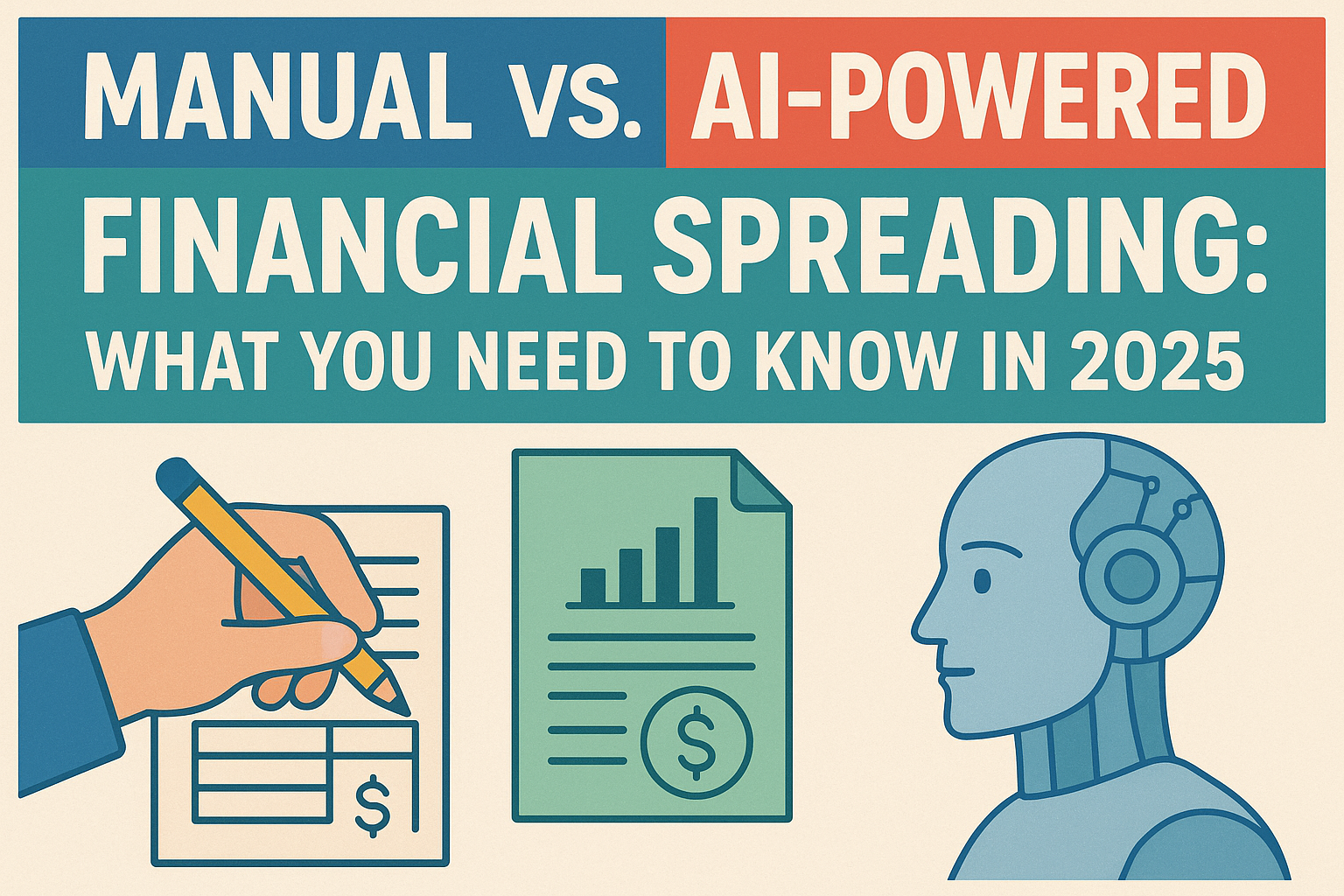Manual vs AI-Powered Financial Spreading: What You Need to Know in 2025
Igor Strelkov
Published on July 1, 2025

Financial spreading is the backbone of credit analysis, investment decisions, and portfolio management. But in 2025, the way we extract and standardize financial data has evolved. The question is no longer "Should we automate?" but rather *"Why haven’t you already?"
This post breaks down the key differences between manual and AI-powered financial spreading, what’s changed in recent years, and how automation is setting a new standard for speed, accuracy, and scale.
What is Financial Spreading?
Financial spreading is the process of extracting key data from financial statements (usually in PDF format) and reformatting it into a standardized structure like:
- Income Statement
- Balance Sheet
- Cash Flow Statement
It’s a critical step in evaluating a company’s health and creditworthiness.
Manual Spreading: The Traditional Approach
Pros:
- Human oversight allows for subjective judgment
- Flexibility in how data is interpreted
Cons:
- Time-intensive: Analysts spend hours per statement
- Error-prone: Manual entry increases the risk of mistakes
- Not scalable: Difficult to process hundreds or thousands of reports
- Inconsistent: Different analysts may classify data differently
Even experienced teams face fatigue and inconsistency, especially when dealing with scanned statements or varying report formats.
AI-Powered Financial Spreading in 2025
Modern tools use OCR, NLP, and machine learning to:
- Read both native and scanned PDF financials
- Extract relevant tables and figures
- Map them to a standardized output
Benefits:
- Speed: Generate financials in seconds
- Accuracy: AI learns patterns and improves with feedback
- Standardization: Outputs follow a consistent structure (GAAP/IFRS)
- Scalability: Analyze 10 or 10,000 reports with the same accuracy
Tools like Assess Finance take this a step further by:
- Automatically detecting line item mappings
- Handling multi-year comparisons
- Exporting clean, structured data in Excel or CSV
Key Differences at a Glance
| Feature | Manual Spreading | AI-Powered Spreading |
|---|---|---|
| Speed | Slow (30+ min/report) | Fast (seconds/minutes) |
| Accuracy | Variable | High, with learning loop |
| Cost | High (labor) | Low (software-driven) |
| Scalability | Limited | Unlimited |
| Consistency | Analyst-dependent | Fully standardized |
Real-World Use Cases
- Lenders: Speed up underwriting by automating financial analysis
- Private Equity: Analyze potential targets quickly across portfolios
- Fintechs: Integrate spreading into onboarding workflows
- Consultants: Avoid repetitive work when building models for clients
Should You Still Use Manual Spreading?
In 2025, the answer is: only when necessary. Human oversight is still important for:
- Reviewing edge cases
- Performing quality checks
- Handling qualitative footnotes
But for the majority of reports, AI can handle the bulk of the work faster and better.
Final Thoughts
The future of financial spreading is already here. Manual processes are too slow, too costly, and too inconsistent for today’s pace of business.
If you're still relying on spreadsheets and copy-pasting, you're falling behind.
Try AI-powered financial spreading with Assess Finance and see the difference.